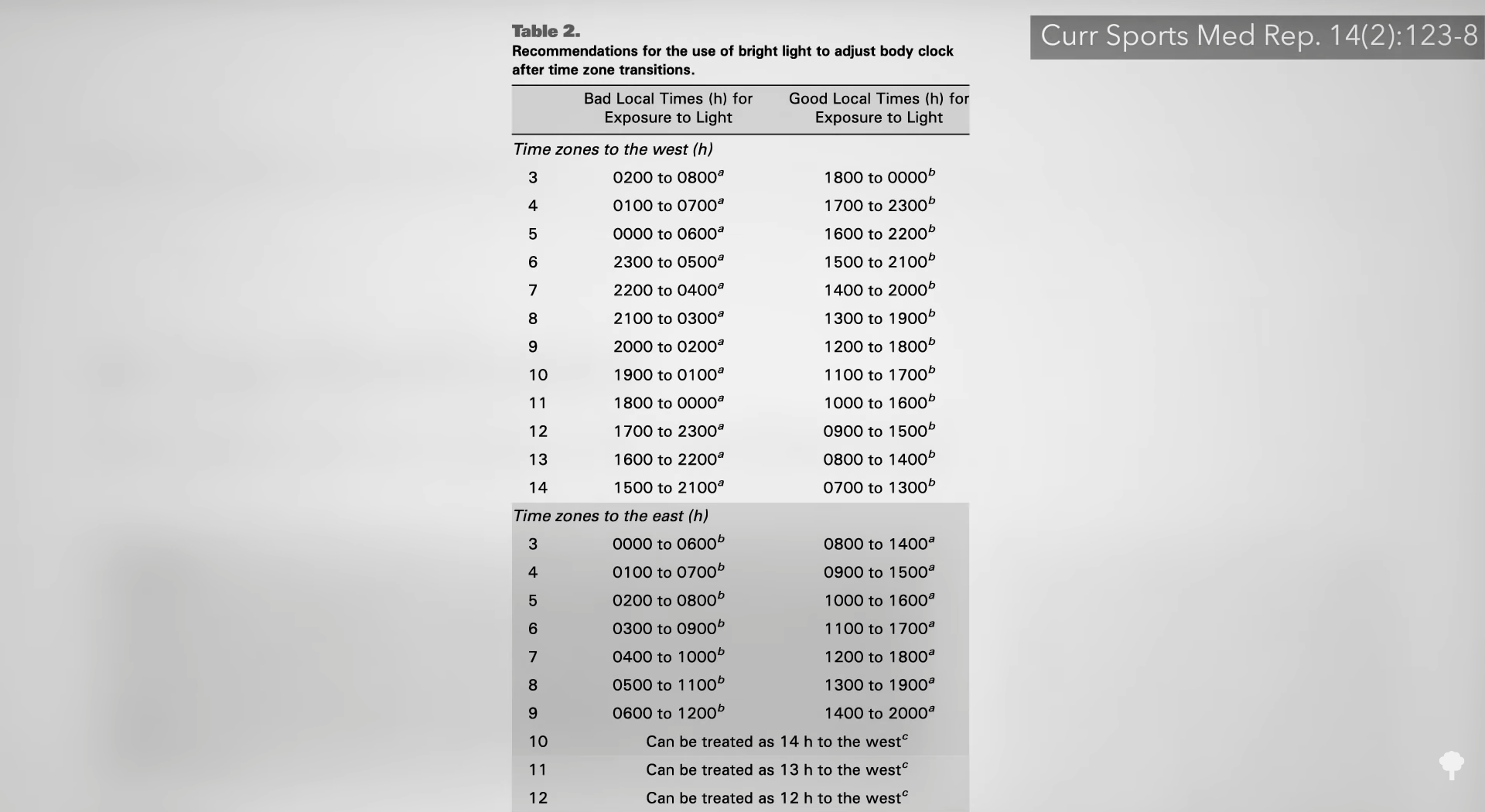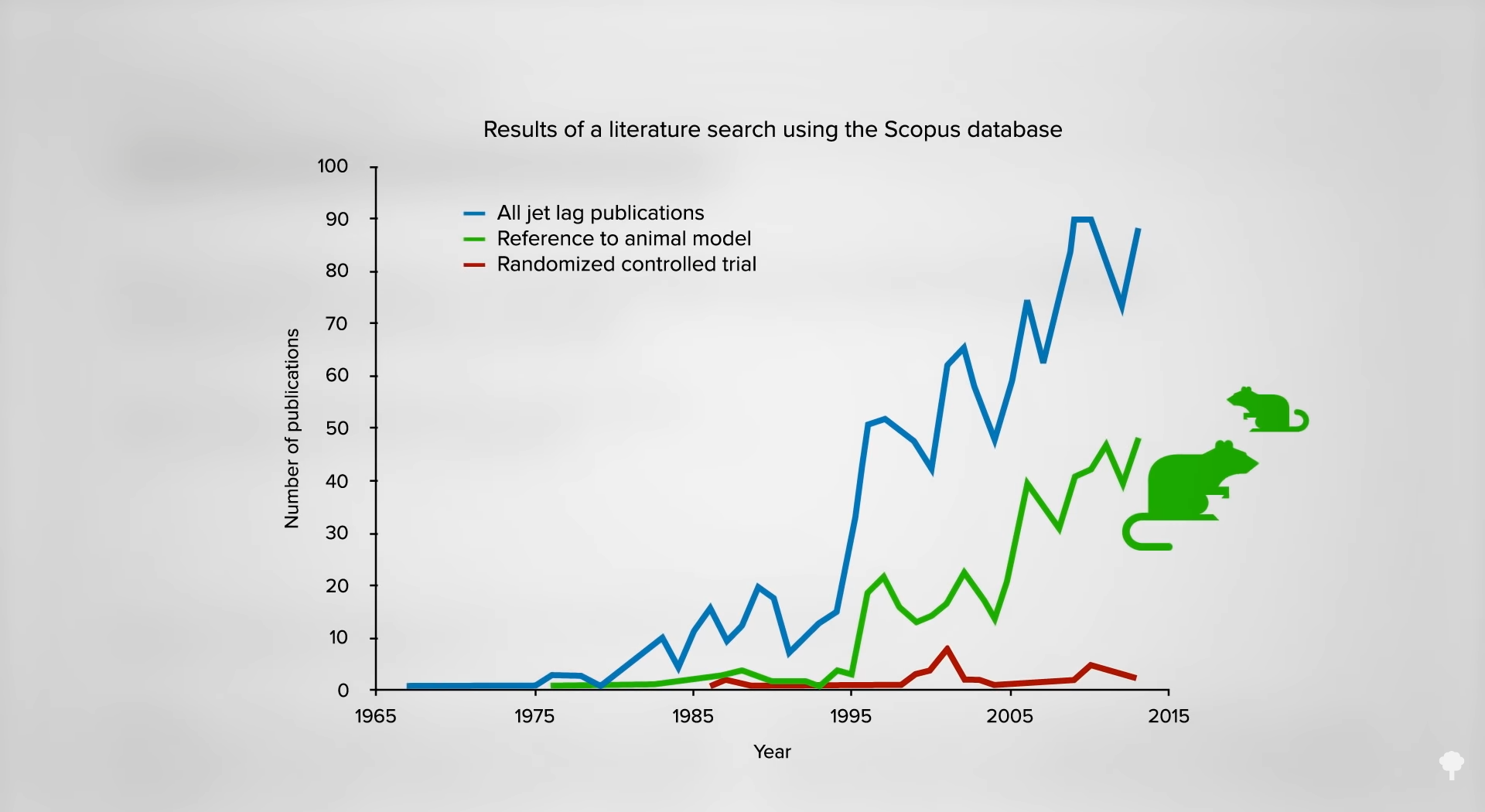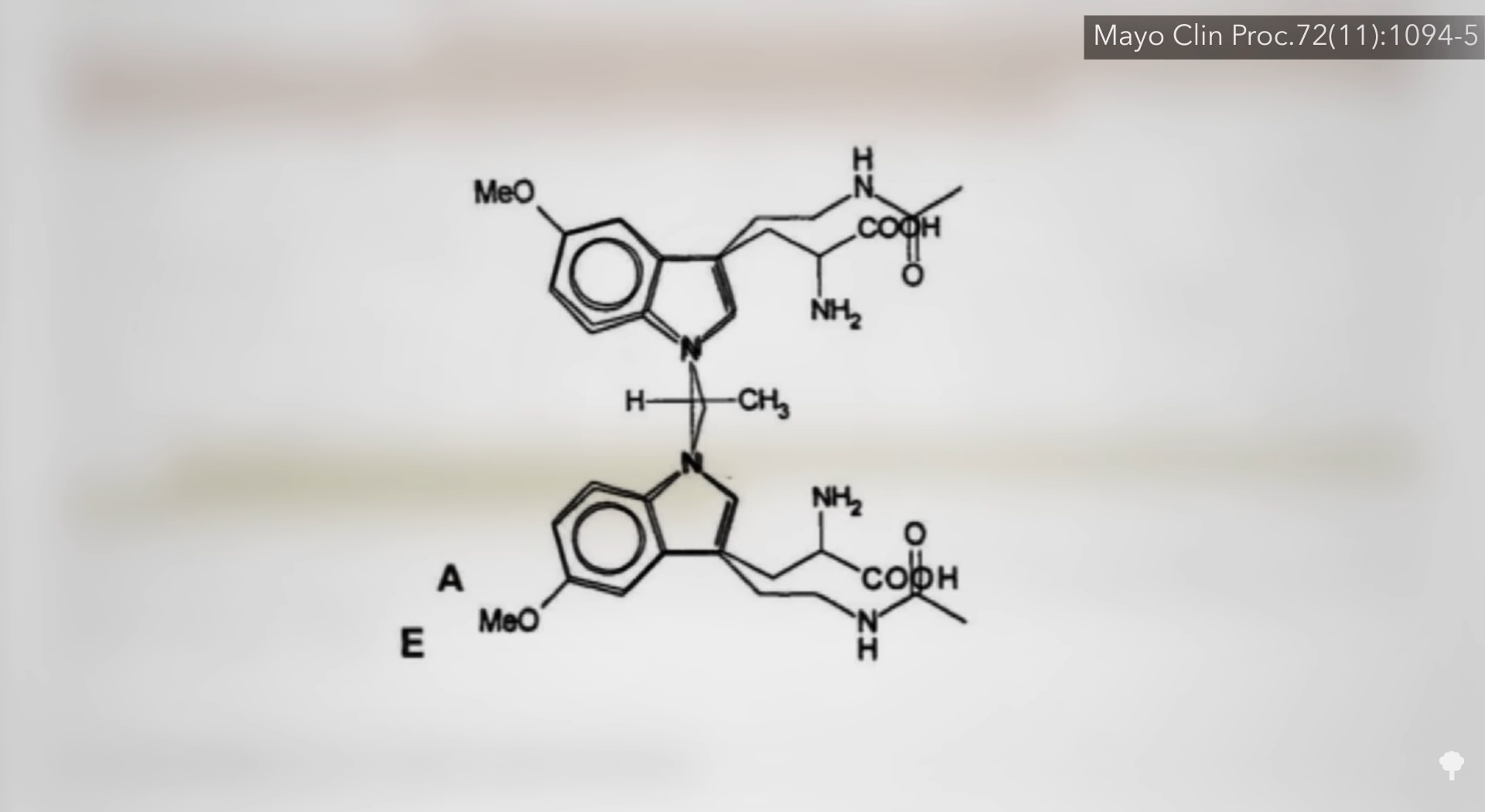Over-the-counter melatonin (“anti-gonad hormone”) supplements tend not to contain what they say they do, and the contaminants could be dangerous.
If you’re crossing three or more time zones during a journey and plan to stay at your destination for a week or more, long enough to make it worthwhile, you can adjust your body clock to the new time by “using behavioural and, if desired, pharmacological methods.” The behavioral method is light exposure and light avoidance at specific times of the day based on which direction you’re going and how many time zones you cross. I feature a helpful table with “recommendations for the use of bright light to adjust body clock after time zone transitions” at 0:23 in my video Are Melatonin Supplements Safe?, which you can also see below. You may want to take a picture or screengrab it for future reference.

The pharmacological intervention is melatonin. “It is called the ‘darkness hormone’ sometimes because…it is secreted at the onset of darkness and is suppressed by light.” A little gland in the center of your head starts to secrete it as soon as it gets dark and shuts off when the sun comes up in the morning, thereby helping to set your circadian rhythm. A lot of research has been conducted on treating jet lag, but most of it has been on rats instead of people, as you can see below and at 0:53 in my video. But, of the handful of human trials that have been done, most have found that taking melatonin “close to the target bedtime at the destination” to try to sync your body to the new time can effectively decrease jet-lag symptoms after long flights “crossing five or more time zones.” It’s important to note that “melatonin differs from most or all other drugs in that the timing of the dose is critical and determines the effect; given at the wrong time it will delay circadian adaptation to local time,” making jet lag even worse. For example, if you were to take “melatonin at bedtime when traveling west,” it “actually could result in a phase advance” when a “phase delay is desired.”

Taking a daily dose of melatonin between 0.5 and 5 mg of melatonin seems to be “similarly effective” in terms of helping with jet-lag symptoms, but the higher dose does have more of a sleeping pill-type effect, allowing people to “fall asleep faster and sleep better after 5mg than 0.5mg,” but that appears to plateau at about 5 mg. Those are massive doses, though. Even taking only a 3 mg dose produces levels in the bloodstream 50 times higher than normal nightly levels. It works, but we don’t know how safe that is. After all, in the early days, melatonin “was known as an anti-gonadal hormone,” with human-equivalent doses of just 1 or 2 mgs reducing the size of sex organs and impairing fertility in laboratory animals. Now, obviously, rats aren’t people, but “considering the pronounced effects of…melatonin on reproductive physiology in these nonhuman mammals, to assume they would not have some sexual effects in humans would almost seem naive.” In fact, the researchers speculated that perhaps melatonin could one day play a role as some sort of a “contraceptive agent in both human males and females.”
Wouldn’t we know about these effects, though? Well, how? Melatonin is available over the counter (OTC) as a dietary supplement, so there isn’t any post-marketing surveillance like there is with prescription drugs. “Without a license, there is no obligation for undesirable side effects following melatonin use to be recorded.” And, let’s not forget about the purity problem. Supplements are so poorly regulated that that you never really know what’s actually in them. Indeed, the “purity of melatonin…cannot be guaranteed. For these reasons, melatonin cannot be recommended….”
Is the purity issue just theoretical though? You don’t know until you put it to the test.
Indeed, due to the “poor quality control of over-the-counter melatonin,” what the labels “say is often not what you get.” Melatonin is not only one of the most popular supplements among adults, but among children, too. An analysis of 31 different brands found that most had just a fraction of what was claimed. What makes that even more egregious is that actual melatonin content varied up to nearly 500 percent compared to what it said on the label. “The most variable sample was a chewable tablet (and most likely to be used by children). It contained almost 9 mg of melatonin when it was supposed to contain 1.5 mg,” which could result in a hundred times higher than natural levels. “In short, there was no guarantee of the strength or purity of OTC melatonin,” leading these researchers to suggest it should be regulated as a drug so that, by law, it would at least contain what it says on the bottle. Okay, but that’s regarding its strength. What about its purity?
“Four of six melatonin products from health food stores”—two-thirds—“contained impurities” that could not be characterized. But, with no exclusive patent, “no pharmaceutical company wants to pay for the toxicological studies and the data assembly required to obtain a product license because it cannot have exclusivity.” The stuff is just so dirt cheap to purchase. The researchers recommend “buying it from a large reputable pharmacy chain and hope for the best.” Is it worth the risk?
A study I discuss at 4:26 in my video suggests it’s not worth the risk at all. Contaminants present in tryptophan supplements were reported to be responsible for a 1980s outbreak of a disease that affected more than a thousand people and resulted in dozens of deaths. Given the structural similarities of tryptophan and melatonin, is it possible that those same toxic contaminants could be created when you’re trying to synthesize melatonin? Indeed, as you can see below and at 4:57 in my video, researchers found similarities between the contaminant blamed on the tryptophan epidemic and what they found in melatonin supplements. In fact, they are a little too close for comfort, suggesting melatonin supplements may just be “‘another accident [epidemic]… waiting to happen.’”

